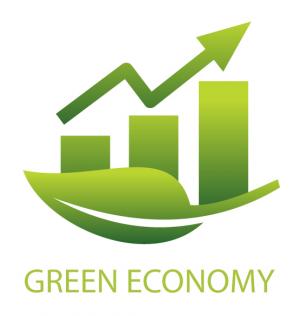Farmer Managed Natural Regeneration
Description
Source: World Resources Institute (2011) A Compilation of Green Economy Policies, Programs, and Initiatives from Around the World. The Green Economy in Practice: Interactive Workshop 1, February 11th, 2011
During the 1950s and 1960s, rapid deforestation of land in Niger for agricultural purposes resulted in severe desertification. Conventional tree planting to combat desertification had only limited success. Beginning in the 1980s, a new method of reforestation, FMNR, became an increasingly popular solution to the problem. FMNR is based on the regeneration of native trees and shrubs from mature root systems of previously cleared desert shrubs and trees. Regeneration techniques are used in agricultural cropland and to manage trees as part of a farm enterprise. FMNR in the savannas of southern Niger adapts centuries-old methods of woodland management to produce continuous harvests of trees for fuel, building materials, and food and fodder without the need for frequent, costly replanting. Trees are trimmed and pruned to maximize harvests while promoting optimal growing conditions (such as access to water and sunlight).
Government decentralization policies supporting land tenure and tree growth reforms. Nonprofit organizations, donor governments, and international aid agencies encouraged and assisted farmers in adopting low-cost techniques for managing the natural regeneration of trees and shrubs.
The benefits of the project are as follows:
- Improved food security as at least 250,000 hectares of degraded land reclaimed for crop production;
- Expanded cultivation of cereals and vegetables, with harvests doubling in some areas;
- Many rural producers have doubled or tripled their incomes through the sale of wood, seed pods, and edible leaves;
- Improved stocks of fuel wood and fodder;
- Average time spent by women collecting firewood has fallen from 2.5 hours to half an hour;
- An increase of 10- to 20-fold in tree and shrub cover on about 5 million hectares of land, with approximately 200 million trees protected and managed;
- Soil fertility improved as higher tree densities act as windbreaks to counter erosion, provide enriching mulch and fix nitrogen in root systems;
- Increased population of wild fauna, including hares, wild guinea fowls, squirrels and jackals;
- New food export markets created, primarily to Nigeria;
- Creation of specialized local markets in buying, rehabilitating, and reselling degraded lands, with land values rising by 75 to 140% in some areas.
SDGS & Targets
Goal 8
Promote sustained, inclusive and sustainable economic growth, full and productive employment and decent work for all
8.1
8.1.1
Annual growth rate of real GDP per capita
8.2
Achieve higher levels of economic productivity through diversification, technological upgrading and innovation, including through a focus on high-value added and labour-intensive sectors
8.2.1
Annual growth rate of real GDP per employed person
8.3
Promote development-oriented policies that support productive activities, decent job creation, entrepreneurship, creativity and innovation, and encourage the formalization and growth of micro-, small- and medium-sized enterprises, including through access to financial services
8.3.1
Proportion of informal employment in total employment, by sector and sex
8.4
Improve progressively, through 2030, global resource efficiency in consumption and production and endeavour to decouple economic growth from environmental degradation, in accordance with the 10-Year Framework of Programmes on Sustainable Consumption and Production, with developed countries taking the lead
8.4.1
Material footprint, material footprint per capita, and material footprint per GDP
8.4.2
Domestic material consumption, domestic material consumption per capita, and domestic material consumption per GDP
8.5
8.5.1
Average hourly earnings of female and male employees, by occupation, age and persons with disabilities
8.5.2
Unemployment rate, by sex, age and persons with disabilities
8.6
8.6.1
Proportion of youth (aged 15-24 years) not in education, employment or training
8.7
Take immediate and effective measures to eradicate forced labour, end modern slavery and human trafficking and secure the prohibition and elimination of the worst forms of child labour, including recruitment and use of child soldiers, and by 2025 end child labour in all its forms
8.7.1
Proportion and number of children aged 5‑17 years engaged in child labour, by sex and age
8.8
Protect labour rights and promote safe and secure working environments for all workers, including migrant workers, in particular women migrants, and those in precarious employment
8.8.1
Fatal and non-fatal occupational injuries per 100,000 workers, by sex and migrant status
8.8.2
Level of national compliance with labour rights (freedom of association and collective bargaining) based on International Labour Organization (ILO) textual sources and national legislation, by sex and migrant status
8.9
By 2030, devise and implement policies to promote sustainable tourism that creates jobs and promotes local culture and products
8.9.1
Tourism direct GDP as a proportion of total GDP and in growth rate
8.10
Strengthen the capacity of domestic financial institutions to encourage and expand access to banking, insurance and financial services for all
8.10.1
(a) Number of commercial bank branches per 100,000 adults and (b) number of automated teller machines (ATMs) per 100,000 adults
8.10.2
Proportion of adults (15 years and older) with an account at a bank or other financial institution or with a mobile-money-service provider
8.a
8.a.1
Aid for Trade commitments and disbursements
8.b
By 2020, develop and operationalize a global strategy for youth employment and implement the Global Jobs Pact of the International Labour Organization
8.b.1
Existence of a developed and operationalized national strategy for youth employment, as a distinct strategy or as part of a national employment strategy
SDG 14 targets covered
Deliverables & Timeline
Resources mobilized
Partnership Progress
Feedback
Action Network


